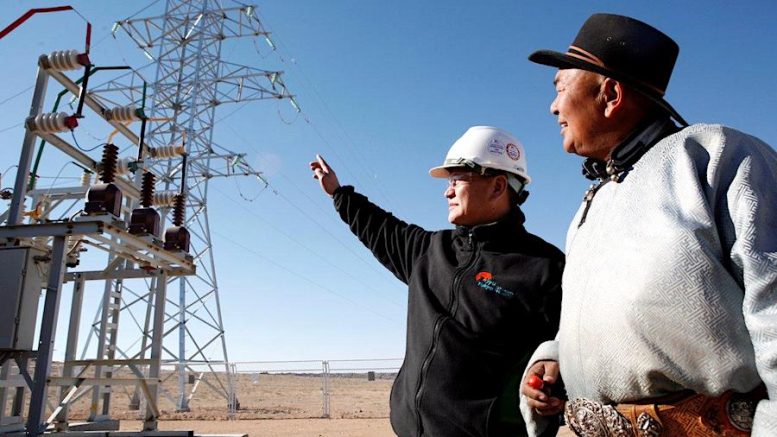Rio Tinto (NYSE: RIO; LSE: RIO) has reached an agreement with Mongolia regarding the construction of a power plant to supply the giant Oyu Tolgoi copper and gold mine, located in the Gobi Desert.
The new deal is a revision of the original power source framework agreement (PSFA) signed in 2018. It states that Rio Tinto, its subsidiary Turquoise Hill Resources (TSX: TRQ; NYSE: TRQ) and the Mongolian government, will work towards finding a permanent power supply solution by the end of March 2021.
The notice confirms that Rio will not have to build its own 300 MW coal power plant, which it had earlier estimated could cost US$924 million. Instead, the government will begin the construction of a coal-fired power plant by July 2021.
The company estimates the plant will come on stream within the next four years. Until then, power supply to the mine and the underground project, which is sourced from China, will continue under the current terms, Rio said.
The massive Oyu Tolgoi deposit was discovered in Mongolia’s southern desert in 2001. Rio Tinto gained control of it in 2012, with the government of Mongolia retaining one-third ownership of the asset.
Turquoise Hill, the Rio Tinto-controlled company that owns 66% of Oyu Tolgoi, is spearheading an ongoing underground expansion, which has faced multiple delays and costs blowouts.
Rio Tinto and Turquoise estimated last year a cost overrun at the project of up to US$1.9 billion due to difficult geology. They noted that total capital expenditure would be in a range of US$6.5 billion-$7.2 billion.
The cost of building a power plant would have come on top of that figure.
The companies also warned of further delays of up to two and a half years, with first sustainable production expected between May 2022 and June 2023.
The project will lift production from 125,000–150,000 tonnes in 2019 to 560,000 tonnes at peak output, targeted for 2025. This would make it the biggest new copper mine to come on stream in several years.
Oyu Tolgoi produced 35,203 tonnes of copper and 26,154 oz. gold in the first three months of this year, which is on track to achieve 2020 production guidance. The coronavirus pandemic, however, has caused operations to slow down.
In a research note, Edward Sterck of BMO Capital Markets offered his thoughts on the power agreement.
“The agreement reduces Rio Tinto and Turquoise Hill’s financing requirements, which is a potentially positive development given the additional funds we estimate will be required due to the delay to underground first production on geotechnical difficulties,” he wrote. “At the same time, the successful delivery of the power supply is no longer within the control of the joint venture, which could increase operational risks. Furthermore, the decision to proceed with a coal option does not help to reduce Rio Tinto’s carbon footprint.”
Sterck also pointed out that the deal as announced did not contain any detail on the electricity price that Oyu Tolgoi will have to pay, “which in turn has a bearing on the project economics.”
— This article first appeared in our sister publication, MINING.com. The Northern Miner and MINING.com are part of Glacier Resource Innovation Group.


Be the first to comment on "Rio Tinto shifts responsibility for coal power plant at Oyu Tolgoi"